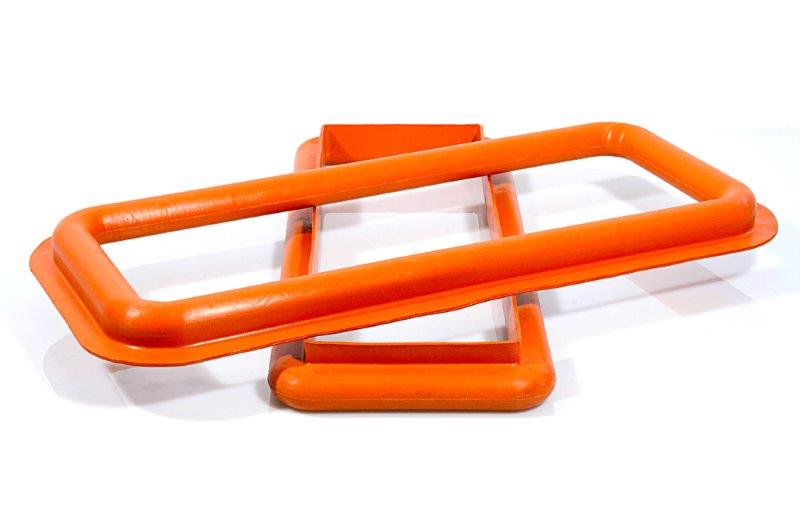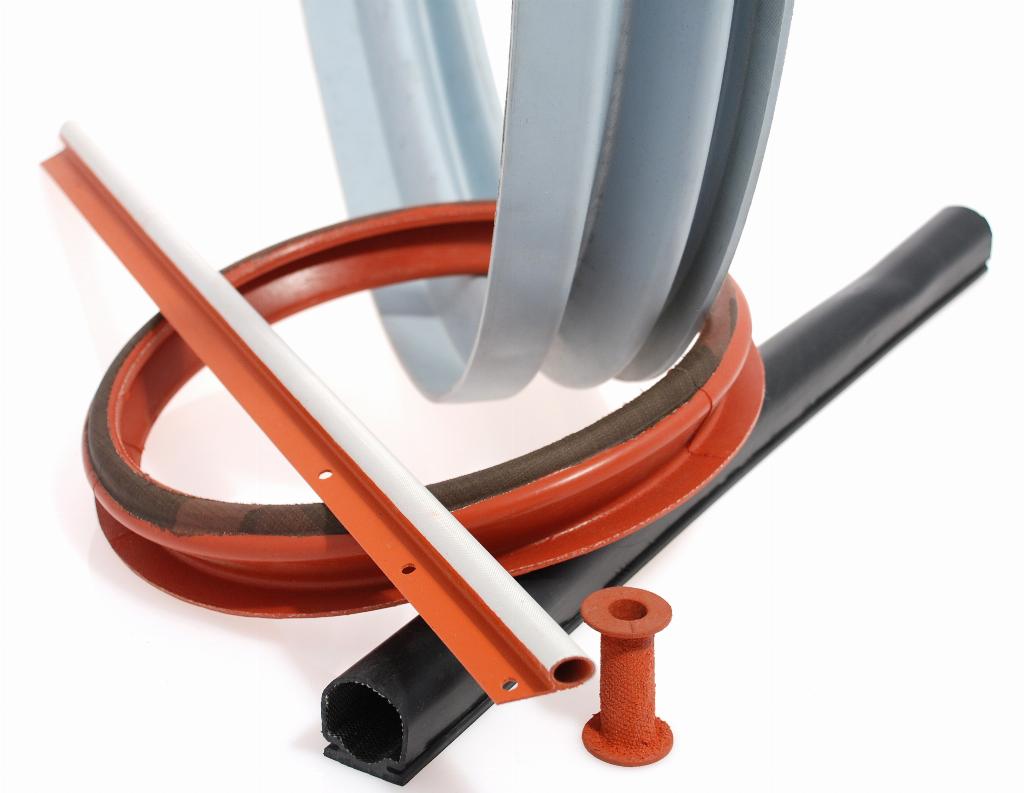Elastomer seals evolve to meet new requirements

Technetics Group senior design application engineer, Louis Launders and technical sales engineer, David Orton explain how market and regulatory forces are driving new elastomer seal technologies, and how manufacturers should prepare.
Elastomer seals are often one of the last components to be specified or designed in military and commercial aviation. They are the ubiquitous filler that closes gaps between components in a wing, fuselage and doors. They may also come into contact with fuel and other aviation fluids, or must be certified fireproof.
Due to changing regulations regarding firestop testing requirements and pressure from OEMs to reduce aircraft weight, however, materials and design of elastomer seals are evolving.
Companies who supply elastomer seals to OEMs and to component and subcomponent manufacturers need to be on the forefront of materials science to help the industry meet this challenge. Major aviation-related products offered by Technetics include static and dynamic elastomer seals, edge-welded metal bellows, abradable seals and acoustic media, graphite seals, brush seals, burst discs, accumulators, metal seals and new hydrodynamic seals.
The largest number of seals used in aircraft, however, are elastomeric seals, which are specified broadly for airframe seals in windows, doors, ailerons, flaps and access panels; fire seals including multi-convolute fire seals used in starters, generator exhaust and in auxiliary power unit (APU) exhaust; other custom applications including airframe gaskets, clamp block assemblies and diaphragms.
Standard profile elastomer seals are appropriate in the vast majority of aerospace sealing solutions as long as the continuous temperature is above -60°C and below 250°C.
Previously, an engineer would simply ensure the seal fits the envelope, regardless of whether they were looking at a static or a dynamic flex seal. But seal design requirements are changing rapidly due to regulatory and market forces. And this places new demands on sealing system vendors and requires greater diligence on the part of specifying engineers.
Tougher, lighter materials
As aircraft OEM manufacturers struggle to help their customers increase margins in a very competitive aviation space, they are asking their tier suppliers to help them reduce the weight of aircraft components. When it comes to seals, this means changes to the design of the cross section and the material of construction. Fractional reductions in weight mean considerable fuel savings over the lifetime of the plane. And when the aircraft weighs less, you can also put less fuel in it, which reduces weight even further. In a single section of the wing, there could be as many as 300 seals, which means a lighter seal can be of critical importance.
Silicone has replaced neoprene in many aviation seals, in large part because it is up to 15% lighter. Many new silicone polymers are even lighter.

Some seals are now made from low-density, high-consistency silicone. Traditional silicone may have a density of 1.15g/cm3. One of these low-density, high-consistency products will maintain a very tight cellular, non-permeable structure but weigh only 1.05grams per cubic centimetre.
Some sealing needs may be met by open-cell, sponge seals, which can have a density as low as 0.45g/cm3. Other materials may be used in conjunction with silicone rubber to improve certain properties that may be vital to the seal’s operation. Ceramics, meta-aramids and glass fibre reinforcements may be used to improve fire resistance. Polyester prepreg materials are being increasingly used to replace metal to reduce weight.
The design, or profile, of the seal may also change to reduce weight. A company like Technetics may design a profile with recesses in the material in non-critical sealing areas. They may scallop the fixture tail in between bulk pitches or place channels down the middle of the seal.
Changing fire testing
Fire test requirements in FAA Advisory Circular 20-135 say a part or material must withstand fire at 2,000°F (1,093°C) for fifteen minutes. But test procedures are changing to better reflect actual conditions in an aircraft fire.
Various propane and oil burners were approved for the administration of these fire tests. But the FAA, Civil Aviation Authority and other regulatory bodies realised that parts and materials often passed the test if it was administered using a propane burner but failed if an oil burner was used, and have made oil burners standard. While propane and oil flames exhibit the same temperature, propane flame will allow test components to radiate heat as the surface temperature rises. An oil flame or jet fuel flame will not allow heat to radiate as readily from the surface.
The change makes sense because the material that typically catches fire in an aircraft is not a gas, but an oil-based liquid. OEMs and their component suppliers are showing increased interest in fire seals as a result. Elastomer seal manufacturers will need to deliver products equal to the challenge.

Some of the same silicone additives used to reduce weight, including DuPont NOMEX, may also help fire seals and other elastomer components withstand required temperatures.
The profile of some seals must also change to pass the more stringent test. In some cases, a seal manufacturer may go back to the airframe manufacturer and ask for more room because the seal must be thicker to resist the oil fire.
Flexible seals, flexible supply chain
Elastomer seals manufacturers must adjust to rapidly changing sealing technology, along with new and more demanding requests from customers.
As fabrics and other internal reinforcing media are added to seals, mass production methods like extrusion are no longer viable. A seal manufacturer must be equipped to manufacture these specialised seals through a moulding process.
Elastomer seals are often not purchased by major OEMs, but by second and third-tier suppliers to the commercial aviation sector. These companies face demanding schedules dictated by their supply chain partners, and within that timeline need innovative seals for components like APUs or environmental control units. A seal vendor must be able to aggressively manage lead times to help their customer stay on schedule. That is why nimble, agile seal manufacturers have an advantage, particularly on specialty seals like elastomeric bellows and bellows assemblies.
Our experience at Technetics Group is that when meeting demanding timelines for complex sealing systems, it is beneficial to have on-going communication not only with customers, but with suppliers so availability of exotic materials is not a constraint. It is also helpful if employees across the organisation have core engineering and product knowledge and are cross-trained so they are able to contribute in different ways as project needs fluctuate.
Elastomer seals are ubiquitous in the aerospace sector, and their design and materials of construction are changing rapidly along with the rest of the industry. Seal specifiers with OEMs and their vendors have the opportunity to partner with their elastomer seal manufacturer to meet and exceed advancing weight, safety and performance requirements.











